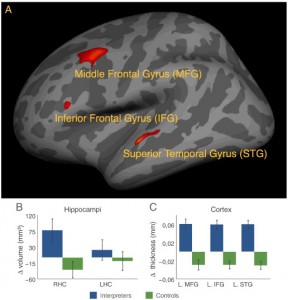12 AUG 2013 RESEARCH & IDEAS Harvard Business school
Hybrid organizations combine the social logic of a nonprofit with the commercial logic of a for-profit business, but are very difficult to finance. So why would anyone want to form one? Julie Battilana and Matthew Leeinvestigate.
Consider two organizations with the same noble purpose: to solve the problem of poor eyesight in developing countries. The first, the Centre for Vision in the Developing World, follows a traditional nonprofit model, soliciting donations that fund the creation and distribution of specially designed eyeglasses that can be calibrated by the user to circumvent the need for an optometrist. The second, VisionSpring, follows a different approach, working to build a network of entrepreneurs who sell eyeglasses in their communities. Rather than raise funds through donations, it sustains itself primarily by the sale of the glasses themselves.
VisionSpring is what organization scholars call a "hybrid" social venture, since it combines the social welfare logic of a nonprofit and the commercial logic of a for-profit business. When hybrids work, they can be a fantastically creative means of solving real-world problems in totally self-sustaining ways, harnessing the strengths of both for-profit and nonprofit models.
But they are a difficult bet for entrepreneurs starting out in the field of business. Because hybrid social ventures fall into a gray area between business and charity, they aren't easily funded by venture capitalists on the one hand or philanthropic foundations on the other.
“IT’S MUCH HARDER TO GET STARTED AND BE SUCCESSFUL IF YOU DON'T FIT INTO A WELL-DEFINED FORM THAT PEOPLE UNDERSTAND.” —MATTHEW LEE
So what would make anyone want to create a hybrid organization? That is the question Harvard Business School Associate Professor Julie Battilanaand doctoral candidate Matthew Lee ask in a new working paper, How the Zebra Got Its Stripes: Imprinting of Individuals and Hybrid Social Ventures.
"It's much harder to get started and be successful if you don't fit into a well-defined form that people understand," says Lee. "Creating a new hybrid is difficult to explain as a rational choice taking this limitation into account."
Lee and Battilana sought other explanations for the existence of such "zebras," including the entrepreneur's family, education, and work background. "Knowing these social ventures are diverging from the more traditional commercial or nonprofit ventures, we wanted to understand what made their founders diverge," says Battilana.
In order to gain that understanding, the researchers partnered withEchoing Green, a nonprofit that funds social entrepreneurs through a highly competitive fellowship program. The organization agreed to facilitate research on the many early-stage social entrepreneurs who applied to the annual program. The researchers followed up with a survey that asked questions about their background and experience, ending up with more than 700 responses in their final sample.
Some of what they found was to be anticipated. Sure enough, having a family member who worked in a for-profit firm as opposed to a nonprofit organization corresponded closely with an individual's tendency to incorporate a business logic into his or her venture.
"When you are in a family background and you are socialized into that environment, you adopt certain ways of thinking and behaving and internalize certain values that are dominant in your environment," says Battilana.
The same went for educational background. "When you are exposed to a certain type of content, you start internalizing it and taking it for granted," she says.
The final factor, work experience, however, didn't play out as might be expected. Working for a few years in a commercial firm significantly increased the chances that an entrepreneur would create a hybrid social venture rather than a traditional nonprofit. But after that initial spike, the increase diminishes with each successive year. After 22 years working in a corporate environment, additional business experience actually makes an entrepreneur less likely to incorporate that experience into a social venture. (The researchers corrected for age in their analysis.)
Lee and Battilana explain this finding by pointing out that as people stay in a certain type of organization for a number of years, they may become more rigid in their modes of thinking about organizational possibilities and less able to see connections between different modes. When longtime businesspeople go on to start a social venture, they are consequently less likely to see how the for-profit and social welfare approaches can be combined. In this way, business experience may actually make them more likely to create a traditional charity, rather than a hybrid social venture.
JUMP SOONER
That's good news for those who are considering starting a hybrid social venture, an increasingly popular interest among her students, says Battilana.
"Young people are getting more and more excited about these new forms of entrepreneurship, but they also realize it's quite complicated, so they think they need to get some for-profit experience to equip themselves," she says.
According to the researchers' findings, however, they may not need as much corporate experience as they think.
"Many people are asking themselves when they should jump from their corporate job to start the social venture they've been dreaming about. Our findings suggest that if you're working in business to get the business mindset, there may be a case for jumping sooner," says Lee. 

 Learning New Languages Helps The Brain Grow
Learning New Languages Helps The Brain Grow